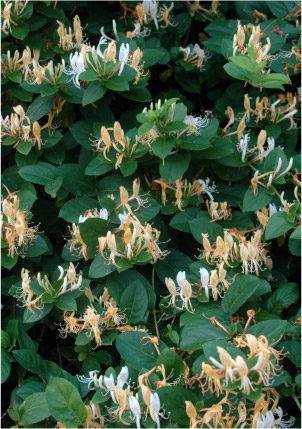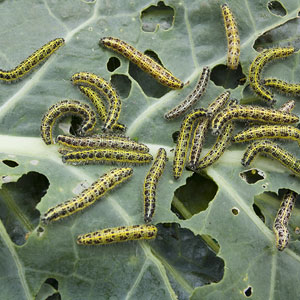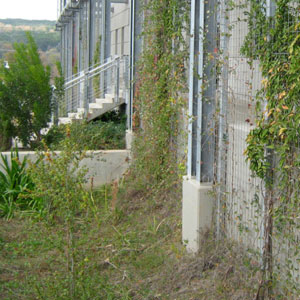
Purple loosestrife was introduced to the northeastern U.S. and Canada in the 1800s for ornamental and medicinal uses. Loosestrife now occurs in 48 states and has estimated damage costs of $45 million per year. Image credit: Steve Dewey

Japanese honeysuckle was introduced to the U.S. in the early 1800s and competes with native vegetation for light and nutrients; it has few natural enemies in North America. Image credit: Landscape For Life
Avoid Invasive Species
Plants and the many environmental and human health benefits they provide are key elements of a sustainable landscape. However, it is important to note that some plants can also cause significant economic and environmental damage.
An invasive species is a plant or animal that is not native to the ecosystem under consideration and whose introduction causes or is likely to cause economic or environmental harm or harm to human health. Studies have shown that at least half of the invasive plants in the United States — whether purple loosestrife, jasmine, glossy privet or pampas grass — were brought here for horticultural use. Invasive plants are often able to displace native vegetation when the natural conditions or checks and balances that exist in their native environment are not a part of the new ecosystem. Such plants are more likely to invade natural ecosystems that have been disturbed or are degraded.
Most invasive plants are habitat generalists and are able to survive in a wide range of conditions. Plants naturally interact with the surrounding environment and, over time, can change the characteristics of an ecosystem. In many areas, invasive species have altered important natural processes like hydrology, fire and nutrient flow — to the detriment of native plant and animal communities.
Many invasive plants are still being sold for garden use despite their documented ability to degrade natural areas. No system is yet in place to effectively screen them for potential invasiveness, yet new plants from around the world are constantly being introduced.
A foolproof system for predicting invasiveness has so far proved elusive, but a few traits should raise red flags. For example, non-native species bearing fleshy fruits that can be dispersed by birds are at the top of the suspect list. You can preserve biodiversity by not planting such species. It’s also good to avoid planting any species that has escaped into vacant lots or roadsides in the area, even if they are not on an official invasive species list.
The most prudent prevention measure is to select regionally native plants when possible. If you grow plants native to your region, you help keep invasive species from spreading. preserve the region’s natural character, and protect the complex interrelationships between native plants and the insects, birds and myriad other creatures with which they have co-evolved.
Resources on invasive species in your region include the National Association of Invasive Plant Councils, USDA Natural Resources Conservation Services, Center for Plant Conservation, The Nature Conservancy and local state forestry association.










